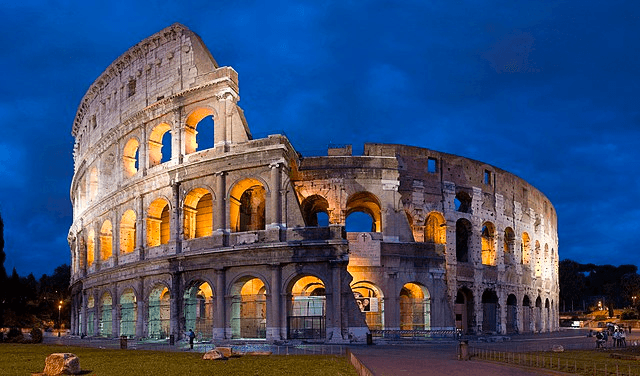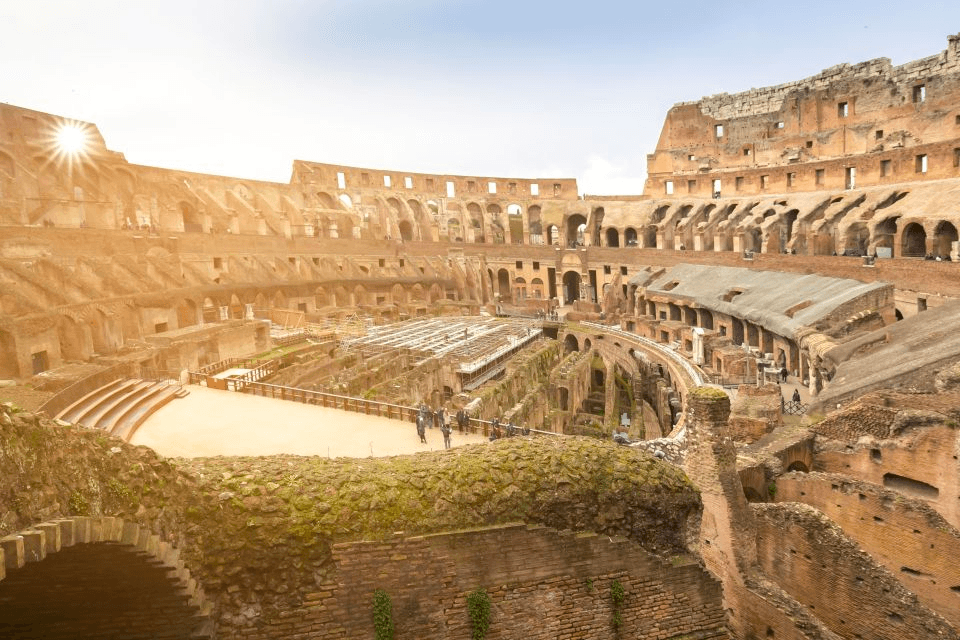Discovering the Colosseum: A Traveler's Handbook
Includes tips on getting tickets!
As one of the most iconic structures in the world, the Colosseum in Rome, Italy is a must-see attraction for anyone traveling to the Eternal City. The Colosseum, also known as the Flavian Amphitheater, is a testament to the grandeur and power of the Roman Empire. This ancient arena was the greatest Roman amphitheatre, and once hosted gladiatorial contests, mock sea battles, and animal hunts, and its imposing structure has stood the test of time, surviving natural disasters and wars.

If you are planning a visit to the Colosseum, it's important to be prepared so that you can make the most of your experience. Here are some tips and tricks for discovering the Colosseum.
History of the Colosseum
Before visiting the Colosseum, it's helpful to learn about its history. The Colosseum was built between 70-80 AD, under the Flavian dynasty, and could hold up to 50,000 spectators. It was used for over four centuries before falling into disuse as gladiator games fell out of style. The Colosseum was damaged due to an earthquake in 1349, leaving behind the ruin that we see today. Only in 1800s did restoration works begin, and till today, efforts to restore the Colosseum are still underway. Today, it stands as a UNESCO World Heritage Site and a popular tourist attraction.

Exploring the Colosseum
The Colosseum has various areas to be explored. But, not all tickets allow access to all areas. So you will need to know exactly what you want to see before buying your tickets.
To help you decide what to see, here are some of the main areas to know about:
Arena
The arena floor is the main part of the Colosseum, where the gladiators fought for their lives under the watch of 50,000 people. Today, you can walk on the arena floor, but this requires a special ticket. From the Arena, you can get a good overview of the Colosseum, including a different perspective of the tunnels below.
Underground (The Hypogeum)
The lower levels of the Colosseum were used for storage and holding the animals, and was the “holding room” for the gladiators. Here, you will learn more about the behind-the-scenes of the Colosseum. Due to the complexity of the labyrinth of tunnels, archaeologists avoided this area and the Underground was only fully opened to visitors in 2021. This is the most fascinating part of the Colosseum, but tickets here are also the hardest to get.
First and Second Tier
The upper floors of the Colosseum was the seating area for spectators. From here, you will be able to see the Colosseum and Arena from the perspective of a spectator. On the second floor, there are also exhibits where you can learn more about the history of the Colosseum. Special ticket access is not required to visit this area.
Belvedere
The Belvedere refers to the upper tiers of the structure, and provides the best views of the Colosseum and surroundings. This is another restricted area that requires a tour to get to, but is currently closed for restoration works.
Roman Forum and Palatine Hill
In the area around the Colosseum, you can also visit the Roman Forum and Palatine Hill. Most of the tickets to the Colosseum sold on the official website also include access to these two sites.

The Roman Forum is a complex of Ancient Rome government buildings, temples, and marketplaces. Some of the things to see in the Roman Forum include the Temple of Venus, the Temple of Julius Caesar, the Arch of Titus, and The Curia (Senate House).

Palatine Hill has a number of archaeological excavations and remains of temples. There is also a museum there, but one of the must-sees at Palatine Hill is the Terrazzo Belvedere del Palatino, where you get one of the best views in Rome.
If you are visiting Roman Forum and Palatine Hill, for faster access and much shorter lines, it is recommended to use the entrance on Via Di San Gregorio instead of the Forum entrance.
Getting your tickets
Tickets to the Colosseum are valid for specific schedules, and advance booking is required. The only exception will be on free visit days, where free tickets have to be collected on site. There are a few ways that you can get tickets online:
From Coopculture
[Updated 7 May] - The Roman Colosseum has since been removed from Coopculture
Coopculture is a site that sells tickts for major attractions in Italy. For the Colosseum, they have a few different ticket options that you can choose from. Each ticket provides access to different areas and has its own set of exclusions. Be sure to read through the ticket’s inclusions and exclusions to make sure you buy the correct ticket!
Tickets are released exactly 720 hours (or 30 days) prior to the time of visit, and in batches in relation to the actual time of visit. What that means is if you are planning to visit at 9.10am on 30 April, the ticket for that slot will be released 1 March at 9.10am. There are multiple slots that will be released in a day. If you are flexible with the actual time of visit, we suggest that if you can try for a time range, and if you don’t get a ticket for a time slot, stay online and try for the next slot.
If you miss these tickets, there are also tickets that are released 7 days prior, and you could try getting those instead. Note that for each day of visit, you can only have a maximum of 6 tickets.
From third-party ticketing and tour providers
Third-party ticketing sites like Klook or Viator also provide tickets to the Colosseum as part of a tour. Often, these tours also include a visit to Palatine Hill and the Roman Forum. While the prices might be slightly higher, it also provides greater flexibility and much less stress with ticketing. A guided tour could also enhance your visit by providing you with more insights to the various sites.
Here are some of the most highly-rated tours across the various OTAs:
- Viator: from USD 65.81, 4.5 stars, 2k+ reviews
- GetYourGuide: from USD 58.58, 4.6 stars, 38k+ reviews
- Klook: from USD 42.05, 4.3 stars, 1k+ reviews
Roma Pass
The Roma Pass is a card that offers transport, discounts, and reduced prices for tourist attractions, including the Colosseum. If you will be visiting multiple attractions, consider getting a Roma Pass instead. The Roma Pass also allows you to join an express line to the Colosseum. Take note however that the Roma Pass does not give you access to the Arena or Underground.
Visiting Tips

- As you will need to go through security clearance, plan to arrive at least 15 minutes before your scheduled entry.
- Wear comfortable shoes as there is a lot of walking involved. Bring sunscreen and a hat during the summer months as the sun can be intense.
- The summer months in July and August are when crowds are at its peak. For the least crowds, try to get a ticket for the first few time slots of the day.
- Be wary of pickpockets, especially during peak travel seasons where it is the most crowded.
Opening Hours
- From 2 January to 28 February: 9.00am - 4.30pm
- From 1 to 26 March: 9.00am - 5.30pm
- From 27 March to 31 August: 9.00am - 7.15pm
- From 1 September to 30 September: 9.00am - 7.00pm
- From 1 to 30 October: 9.00am - 6.30pm
- From 31 October to 31 December: 9.00am - 4.30pm
Last admission one hour before closing.